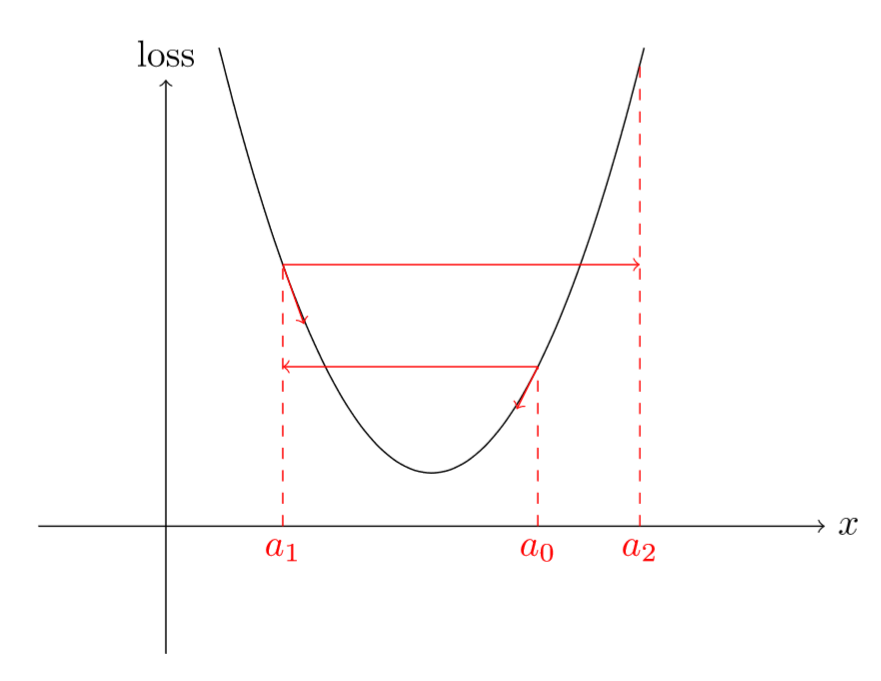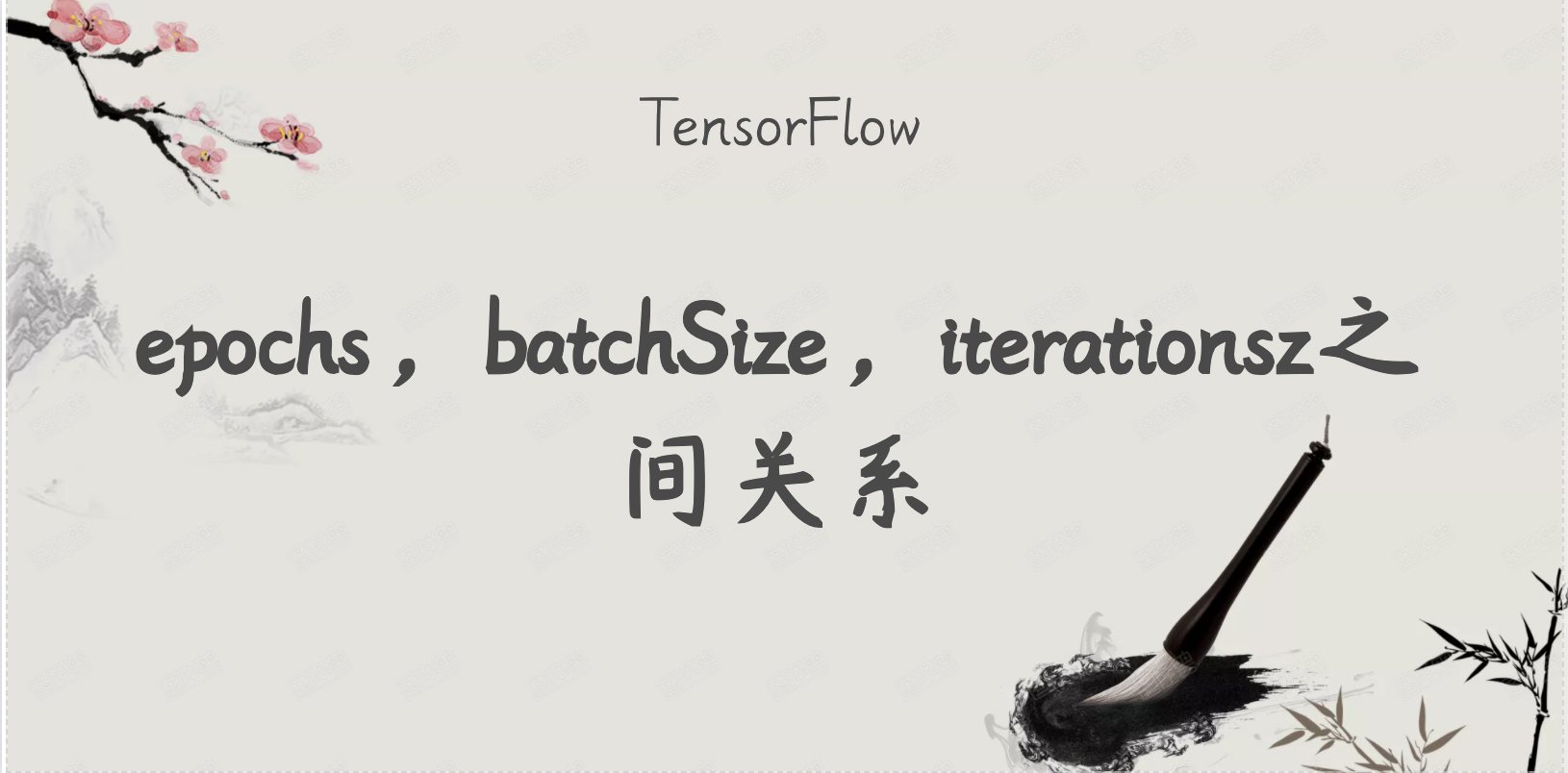本篇文章主要介绍如何使用TensorFlow构建自己的图片数据集TFRecord的方法,并使用最新的数据处理Dataset API进行操作。
TFRecord
TFRecord数据文件是一种对任何数据进行存储的二进制文件,能更好的利用内存,在TensorFlow中快速的复制,移动,读取,存储等,只要生成一次TFRecord,之后的数据读取和加工处理的效率都会得到提高。
一般来说,我们使用TensorFlow进行数据读取的方式有以下4种:
(1)预先把所有数据加载进内存
(2)在每轮训练中使用原生Python代码读取一部分数据,然后使用feed_dict输入到计算图
(3)利用Threading和Queues从TFRecord中分批次读取数据
(4)使用Dataset API
(1)方案对于数据量不大的场景来说是足够简单而高效的,但是随着数据量的增长,势必会对有限的内存空间带来极大的压力,还有长时间的数据预加载,甚至导致我们十分熟悉的OutOfMemoryError。
(2)方案可以一定程度上缓解了方案(1)的内存压力问题,但是由于在单线程环境下我们的IO操作一般都是同步阻塞的,势必会在一定程度上导致学习时间的增加,尤其是相同的数据需要重复多次读取的情况下。
而方案(3)和方案(4)都利用了我们的TFRecord,由于使用了多线程使得IO操作不再阻塞我们的模型训练,同时为了实现线程间的数据传输引入了Queues。
在本文中,我们主要使用方案(4)进行操作。
建立TFRecord
整体上建立TFRecord文件的流程主要如下;
在TFRecord数据文件中,任何数据都是以bytes列表或float列表或int64列表的形式存储(注意:是列表形式 ),因此,将每条数据转化为列表格式。
创建的每条数据列表都必须由一个Feature类包装,并且,每个feature都存储在一个key-value键值对中,其中key对应每个feature的名称。这些key将在后面从TFRecord提取数据时使用。
当所需的字典创建完之后,会传递给Features类。
最后,将features对象作为输入传递给example类,然后这个example类对象会被追加到TFRecord中。
对于所有数据,重复上述过程。
接下来,对一个简单数据创建TFRecord。我们创建了两条样例数据,包含了整型、浮点型、字符串型和列表型,如下所示:
1 2 3 4 5 6 7 8 9 10 11 12 13 14 15 16 import tensorflow as tfdata_arr = [ { 'int_data' :108 , 'float_data' :2.45 , 'str_data' :'string 100' .encode(), 'float_list_data' :[256.78 ,13.9 ] }, { 'int_data' : 2108 , 'float_data' : 12.45 , 'str_data' : 'string 200' .encode(), 'float_list_data' : [1.34 ,256.78 , 65.22 ] } ]
首先,我们将原始数据的每一个值转换成列表形式。需要注意 的是每条数据对应的数据类型。
1 2 3 4 5 6 7 8 def get_example_object (data_record ): int_list1 = tf.train.Int64List(value = [data_record['int_data' ]]) float_list1 = tf.train.FloatList(value = [data_record['float_data' ]]) str_list1 = tf.train.BytesList(value = [data_record['str_data' ]]) float_list2 = tf.train.FloatList(value = data_record['float_list_data' ])
然后,使用Feature类对每个数据列表进行包装,并且以key-value的字典格式存储。
1 2 3 4 5 6 7 feature_key_value_pair = { 'int_list' :tf.train.Feature(int64_list = int_list1), 'float_list' : tf.train.Feature(float_list=float_list1), 'str_list' : tf.train.Feature(bytes_list=str_list1), 'float_list2' : tf.train.Feature(float_list=float_list2), }
接着,将创建好的feature字典传递给features类,并且使用Example类处理成一个example。
1 2 3 4 5 features = tf.train.Features(feature = feature_key_value_pair) example = tf.train.Example(features = features) return example
最后,遍历所有数据集,将每条数据写入tfrecord中。
1 2 3 4 5 6 with tf.python_io.TFRecordWriter('example.tfrecord' ) as tfwriter: for data_record in data_arr: example = get_example_object(data_record) tfwriter.write(example.SerializeToString())
运行整个代码之后,我们在磁盘中将看到一个’example.tfrecord’文件
1 2 3 $ ls |grep *.tfrecordexample.tfrecord
该文件中存储的就是上面我们定义好的两条数据,接下来,我们将图像数据保存到TFRecord文件中。
图像数据-TFRecord
通过上面一个简单例子,我们基本了解了如何为包含字典和列表的文本类型的数据创建TFRecord,接下来,我们对图像数据创建TFRecord。我们使用kaggle上面的猫狗数据集。
该数据集可以从:kaggle猫狗 进行下载。
下载完之后,我们会得到两个文件夹
其中train文件夹中主要是训练数据集,test文件夹中主要是预测数据集,主要对train数据集进行操作。
该训练集中一共有25000张图像,其中猫狗图像各一半,接下来我们看看数据格式。
1 2 3 4 $ ls cat.124.jpg cat.3750.jpg cat.6250.jpg cat.8751.jpg dog.11250.jpg dog.2500.jpg dog.5000.jpg dog.7501.jpg ...
在train文件夹中,我们可以看到图片数据主要是以.jpg结尾的,并且文件名中包含了该图像的所属标签,我们需要从文件名中提取每张图像对应的标签类别。
对图像数据进行保存,主要有两种方式。首先我们来看看常见的方式,即首先读取这些图像数据,然后将这些数值化的图像数据转化为字符串形式,并存储到TFRecord。
1 2 3 4 5 6 7 8 9 10 11 12 13 14 15 16 17 18 19 20 21 22 23 import tensorflow as tfimport osimport timefrom glob import globimport progressbarfrom PIL import Imageclass GenerateTFRecord (): def __init__ (self,labels ): self .labels = labels def _get_label_with_filename (self,filename ): basename = os.path.basename(filename).split("." )[0 ] return self .labels[basename] def _convert_image (self,img_path,is_train=True ): label = self ._get_label_with_filename(img_path) image_data = Image.open (img_path) image_data = image_data.resize((227 , 227 )) image_str = image_data.tobytes() filename = os.path.basename(img_path)
首先,我们创建一个生成TFRecorf类——GenerateTFRecord,其中,label一般是一个字典格式,将文本型的标签转化为对应的数值型标签,比如,这里,我们令0表示猫,1表示狗,从而label为
1 labels = {"cat" :0 ,'dog' :1 }
另外,函数_get_label_with_fielname主要是从文件名中提取对应的标签类别。
接着,我们定义一个转换函数-_convert_image,
img_path:表示一张图片的具体路径
is_train:表示是否是训练集,上面我们下载了两份数据,训练数据集中带有标签,而test数据集中没有标签,在保存成TFRecord时,令test的数据label为-1
首先使用Image读取数据,接着将数据大小统一成227x227x3(这里只是一个案例,一般我们在构建模型之前会将图像数据大小统一成一个指定的大小),然后将图像数据转化为二进制格式。
处理完原始图像数据之后,构建一个example。
1 2 3 4 5 6 7 8 9 10 11 12 13 14 15 if is_train: feature_key_value_pair = { 'filename' : tf.train.Feature(bytes_list=tf.train.BytesList(value=[filename.encode()])), 'image' : tf.train.Feature(bytes_list=tf.train.BytesList(value=[image_str])), 'label' : tf.train.Feature(int64_list=tf.train.Int64List(value=[label])) } else : feature_key_value_pair = { 'filename' : tf.train.Feature(bytes_list=tf.train.BytesList(value=[filename.encode()])), 'image' : tf.train.Feature(bytes_list=tf.train.BytesList(value=[image_str])), 'label' : tf.train.Feature(int64_list=tf.train.Int64List(value=[-1 ])) } feature = tf.train.Features(feature = feature_key_value_pair) example = tf.train.Example(features = feature) return example
这里,我们保存了三个信息,即文件名、处理之后的图像信息和图像标签(当然还可以保存其他数据,只要按照上面格式定义好就行了)。
每张图像处理模式完成之后,遍历所有train数据集,并保存到tfrecord中。
1 2 3 4 5 6 7 8 9 10 11 12 def convert_image_folder (self,img_folder,tfrecord_file_name ): img_paths = [img_path for img_path in glob(os.path.join(img_folder,'*' ))] with tf.python_io.TFRecordWriter(tfrecord_file_name) as tfwriter: widgets = ['[INFO] write image to tfrecord: ' , progressbar.Percentage(), " " , progressbar.Bar(), " " , progressbar.ETA()] pbar = progressbar.ProgressBar(maxval=len (img_paths), widgets=widgets).start() for i,img_path in enumerate (img_paths): example = self ._convert_image(img_path,is_train=True ) tfwriter.write(example.SerializeToString()) pbar.update(i) pbar.finish()
其中:
img_folder:原始图像存放的路径
tfrecord_file_name:tfrecord文件保存路径
上面,我们使用了progressbar模块,该模块是一个进度条显示模块,可以帮助我们很好的监控数据处理情况。
最后,加入下列代码,并运行整个代码以完成train数据集的tfrexord构建。
1 2 3 4 5 6 if __name__ == "__main__" : start = time.time() labels = {"cat" :0 ,'dog' :1 } t = GenerateTFRecord(labels) t.convert_image_folder('train' ,'train.tfrecord' ) print ("Took %f seconds." % (time.time() - start))
该方法使用了约115s完成了整个train数据集的TFRecord生成过程,在目录中,我们生成了一个名为train.tfrecord的文件。
1 2 3 $ ls -lht11G train.tfrecord
该文件大小居然达到了11G(注意 :该文件直接保存的是原始图像,不是处理之后的,因为需要跟另一种方法进行比较)。从前面,我们知道该train数据集中只有25000张图像数据,每张图像大小差不多50kb左右,25000张图像大小总共差不多1.2G左右,而生成的TFRecord文件居然达到11G,那么对于imagenet的数据集,可能会发生磁盘装不下的。这或许是许多人不喜欢使用TFRecord的一个原因吧。
为什么TFRecord变得如此巨大?
我们来简单的分析下,通过查看每张图像的shape,比如cat.8739.jpg,
1 2 3 4 5 6 7 import matplotlib.image as mpimgfrom PIL import Imageimg_path = 'train/cat.8739.jpg' img_data = mpimg.imread(img_path) img_data.shape
该猫图像数据的shape是(324,319,3)。对每个维度进行相乘,即324x319x3=310068,那么在numpy数据格式中(假设数据类型为unit8),该图片以310069个整数表示。当我们调用.tobytes()时,这些数字将按顺序存在在一个二进制序列中。我们假设每一个数字都是大于100的,也就是需要三个字符,如果每个数字之间使用’,'分割,则对于该图片,我们需要:
310068 x(3+1) = 1240232个字符,如果一个字符对应一个字节,那么一张图片就差不多需要1MB。
上面只是个人计算,也许本身就不对的。
如何解决?
我们从另一个角度考虑:图片的存储大小,即上面我们分析每张图片差不多就50kb左右。其实在实际应用中,很多训练数据集的图像存储大小一般都在几kb到几百kb左右。因此,我们可以直接存储图像的bytes到tfrecord中。tensorflow模块提供了一个tf.gfile.FastGFile类,可以直接读取图像的bytes形式。我们来看看tf.gfile.FastGFile主要读取的是什么内容。
1 2 3 4 5 path_jpg = img_path = 'train/cat.8739.jpg' image_raw_data = tf.gfile.FastGFile(path_jpg,'rb').read() with tf.Session() as sess: print(image_raw_data)
你将在屏幕上看到一大串的bytes,比如;
1 2 b'\xff\xd8\xff\xe0\x00\x10JFIF\x00\x01\x01\x00\x00\x01\x00\x01\x00\x00\xff\xdb\x00C\x00\n\x07\x07\x08\x07\x06\n\x08\x08\x08\x0b\n\n\x0b\x0e\x18\x10\x0e\r\r\x0e\x1d\x15\x16\x11\x18#\x1f%$"\x1f"!&+7/&)4)! ....
我们可以看到tf.gfile.FastGFile读取的不在是原始图像的内容,也不是numpy格式。
因此,我们将读取图像部分代码替换为:
1 2 with tf.gfile.FastGFile(img_path,'rb' ) as fid: image_str = fid.read()
其他保持不变,并且保存为train2.tfrecord文件。即:
1 2 3 4 5 6 if __name__ == "__main__" : start = time.time() labels = {"cat" :0 ,'dog' :1 } t = GenerateTFRecord(labels) t.convert_image_folder('train' ,'train2.tfrecord' ) print ("Took %f seconds." % (time.time() - start))
该方法只使用了约8s完成了整个train数据集的TFRecord生成过程,在目录中,我们生成了一个新的train2.tfrecord的文件
1 2 3 $ ls -lht548M train2.tfrecord
从结果中可以看到,新的TFRecord文件只有548M,相比原先的11G,减小了很多。因此使用tf.gfile.FastGFile读取图像数据,明显的好处有:
当然还有其他办法可以再进一步降低大小,但是可能会改变图像的内容。因此,这里就不做描述了。因为这种降低已经可以满足我目前的项目需求了。
从TFRecord中提取数据
上面我们已经对数据生成了TFRecord文件,接下来,我们将从中读取出数据。具体如下:
首先,对生成的TFRecord初始化一个TFRecordDataset类
接着,从TFRecord中提取数据,这里就需要利用到我们之前设定的key值,另外。如果我们知道每个值列表中的大小(即大小相同的),那么我们可以使用FixedLenFeature,否则,我们应该使用VarLenFeature。
最后,使用parse_single_example api从每条data record中提取我们定义的数据字典。
下面,我们通过一个简单的提取数据代码来说明整个过程。
1 2 3 4 5 6 7 8 9 10 11 12 import tensorflow as tfdef extract_fn (data_record ): features = { 'int_list' :tf.FixedLenFeature([],tf.int64), 'float_list' :tf.FixedLenFeature([],tf.float32), 'str_list' :tf.FixedLenFeature([],tf.string), 'float_list2' :tf.VarLenFeature(tf.float32) } sample = tf.parse_single_example(data_record,features) return sample
上面的extract_fn函数对应了整个过程,下面我们使用Dataset模块处理数据
1 2 3 4 5 6 dataset = tf.data.TFRecordDataset(filenames=['example.tfrecord' ]) dataset = dataset.map (extractz_fn) iterator = dataset.make_one_shot_iterator() next_example = iterator.get_next()
首先,对TFRrecord初始化一个TFRecordDataset类,然后通过map函数对TFRecords中的每条记录提取数据,最后通过一个迭代器一条条返回数据。
1 2 3 4 5 6 7 8 9 10 11 12 13 14 15 16 17 tf.enable_eager_execution() try : while True : next_example = iterator.get_next() print (next_example) except : pass with tf.Session() as sess: try : while True : data_record = sess.run(next_example) print (data_record) except : pass
从TFRecord中提取图像
在对图像TFRecord数据文件提取数据时,需要利用tf.image.decode_image API,可以对图像数据进行解码,直接看代码:
1 2 3 4 5 6 7 import tensorflow as tfimport osclass TFRecordExtractor (): def __init__ (self,tfrecord_file,epochs,batch_size ): self .tfrecord_file = os.path.abspath(tfrecord_file) self .epochs = epochs self .batch_size = batch_size
其中:
tfrecord_file:tfrecord数据文件路径
epochs:模型训练的epochs
batch_size: batch的大小,每次返回的数据量
定义一个提取数据函数,该函数后面通过map函数对每个data record进行解析。类似于生成TFRecord的feature格式,解析成字典格式,主要是通过key值获取对应的数据。
1 2 3 4 5 6 7 8 9 10 11 12 def _extract_fn (self,tfrecord ): features ={ 'filename' : tf.FixedLenFeature([],tf.string), 'image' : tf.FixedLenFeature([],tf.string), 'label' : tf.FixedLenFeature([],tf.int64) }
下面,使用tf.image.decode_image API对图像数据进行解码,并重新定义图像的大小(由于使用tf.gfile.FastGFile读取图像数据时无法重新定义图像大小,因此我们在解码时候进行重新定义图像大小)。最后返回图像数据、标签和文件名。
1 2 3 4 5 6 sample = tf.parse_single_example(tfrecord,features) image = tf.image.decode_jpeg(sample['image' ]) image = tf.image.resize_images(image, (227 , 227 ),method=1 ) label = sample['label' ] filename = sample['filename' ] return [image,label,filename]
使用Dataset对TFRecord文件进行操作:
1 2 3 4 5 def extract_image (self ): dataset = tf.data.TFRecordDataset([self .tfrecord_file]) dataset = dataset.map (self ._extract_fn) dataset = dataset.repeat(count = self .epochs).batch(batch_size=self .batch_size) return dataset
首先,对TFRecord文件初始化一个 tf.data.TFRecordDataset类。接着使用map函数对每条data record进行_extract_fn解析。这里的epochs和batch_size跟模型训练有关,该函数最后返回一个迭代器,每次调取的是batch大小的数据量。
1 2 3 4 5 6 if __name__ == "__main__" : t = TFRecordExtractor('train2.tfrecord' ,epochs=1 ,batch_size=10 ) dataset = t.extract_image() for (batch,batch_data) in enumerate (dataset): pass
完成代码
我将两个功能何在一个TFRecord类中,主要是方便后续使用。
1 2 3 4 5 6 7 8 9 10 11 12 13 14 15 16 17 18 19 20 21 22 23 24 25 26 27 28 29 30 31 32 33 34 35 36 37 38 39 40 41 42 43 44 45 46 47 48 49 50 51 52 53 54 55 56 57 58 59 60 61 62 63 64 65 66 67 68 69 70 71 72 73 import tensorflow as tfimport osfrom glob import globimport progressbarclass TFRecord (): def __init__ (self, labels, tfrecord_file ): self .labels = labels self .tfrecord_file = tfrecord_file def _get_label_with_filename (self, filename ): basename = os.path.basename(filename).split("." )[0 ] return self .labels[basename] def _convert_image (self, img_path, is_train=True ): label = self ._get_label_with_filename(img_path) filename = os.path.basename(img_path) with tf.gfile.FastGFile(img_path, 'rb' ) as fid: image_str = fid.read() if is_train: feature_key_value_pair = { 'filename' : tf.train.Feature(bytes_list=tf.train.BytesList(value=[filename.encode()])), 'image' : tf.train.Feature(bytes_list=tf.train.BytesList(value=[image_str])), 'label' : tf.train.Feature(int64_list=tf.train.Int64List(value=[label])) } else : feature_key_value_pair = { 'filename' : tf.train.Feature(bytes_list=tf.train.BytesList(value=[filename.encode()])), 'image' : tf.train.Feature(bytes_list=tf.train.BytesList(value=[image_str])), 'label' : tf.train.Feature(int64_list=tf.train.Int64List(value=[-1 ])) } feature = tf.train.Features(feature=feature_key_value_pair) example = tf.train.Example(features=feature) return example def convert_image_folder (self, img_folder ): img_paths = [img_path for img_path in glob(os.path.join(img_folder, '*' ))] with tf.python_io.TFRecordWriter(self .tfrecord_file) as tfwriter: widgets = ['[INFO] write image to tfrecord: ' , progressbar.Percentage(), " " , progressbar.Bar(), " " , progressbar.ETA()] pbar = progressbar.ProgressBar(maxval=len (img_paths), widgets=widgets).start() for i, img_path in enumerate (img_paths): example = self ._convert_image(img_path, is_train=True ) tfwriter.write(example.SerializeToString()) pbar.update(i) pbar.finish() def _extract_fn (self, tfrecord ): features = { 'filename' : tf.FixedLenFeature([], tf.string), 'image' : tf.FixedLenFeature([], tf.string), 'label' : tf.FixedLenFeature([], tf.int64) } sample = tf.parse_single_example(tfrecord, features) image = tf.image.decode_jpeg(sample['image' ]) image = tf.image.resize_images(image, (227 , 227 ), method=1 ) label = sample['label' ] filename = sample['filename' ] return [image, label, filename] def extract_image (self, shuffle_size,batch_size ): dataset = tf.data.TFRecordDataset([self .tfrecord_file]) dataset = dataset.map (self ._extract_fn) dataset = dataset.shuffle(shuffle_size).batch(batch_size) return dataset






